

Damion Smy
Chevrolet Corvette Grand Sport could get 6.7-litre LS6 V8 - report
14 Hours Ago
Power isn’t everything in a roadster. But an extra 35-kilowatt kick up the backside is a welcome boost to the BMW Z4 M40i
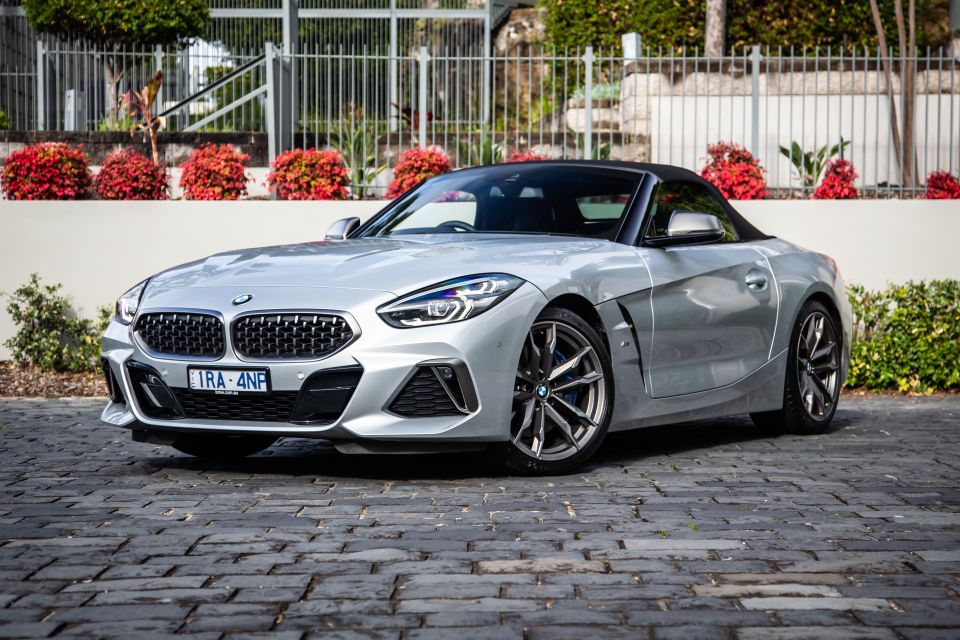
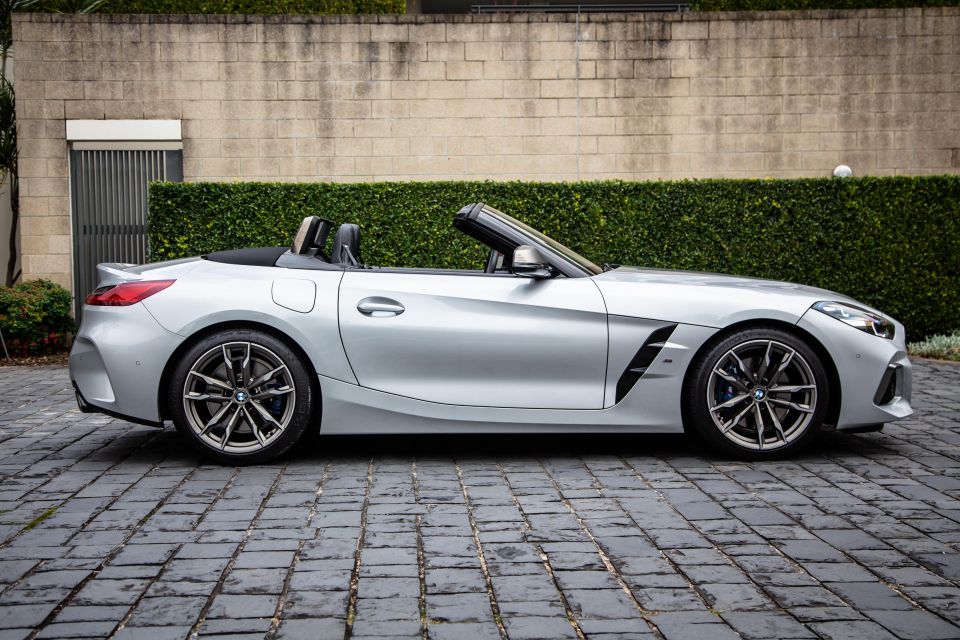

Journalist
New from
$127,900
excl. on-roads

Journalist
New from
$127,900
excl. on-roads


Journalist
New from
$127,900
excl. on-roads

Journalist
New from
$127,900
excl. on-roads
Quickly see how this car stacks up against its competition. Select any benchmark to see more details.
Where expert car reviews meet expert car buying – CarExpert gives you trusted advice, personalised service and real savings on your next new car.
It’s fair to say that when the technically related BMW Z4 and Toyota Supra sports cars were resurrected in 2018-2019, the long-awaited and hugely anticipated revival of the iconic Japanese nameplate overshadowed that of the German and its two-year sabbatical.
The cooperative gestation of the pair is both fascinating and well-documented, but the result lost on very few was that good money afforded you a spirited turbo-six Asian sports coupe, while the premium Euro-badged roadster cut from the same cloth with similar power and performance asked for quite a bit more outlay.

So for 2020, BMW jacked up the flagship Z4 M40i’s power from a Supra-matching 250kW to a dominating 285kW in Oz. Not coincidentally, the same 285kW figure now powers certain Supra special editions in some markets.
Also not coincidentally, the new Z4’s top dog M40i now aligns its power with other BMW ‘40’ models in the X3 M40i and M340i xDrive.
Regardless, suddenly there were 35 extra good (kilowatt) reasons to lure buyers closer to the drop-top Bimmer. Particularly when it came at no extra cost over the outgoing 250kW version.
Or at least such was the case until BMW jacked up pricing across its range this June.

Prior to BMW’s mid-year mark-up, the Z4 M40i was $124,900 list. It’s now $127,900 before on-roadcosts. While $3000 extra mightn’t represent a huge lift in lease payments, it’d keep the M40i’s tank brimmed for a lot of Sunday morning back-road punts.
How does that compare with the landscape? Well, it’s a formidable $33,000 more than the Supra GTS and $43,000 more than the base Supra GT, both with a 250kW version of the inline six. Closer to home, the M40i is $20,000 pricier than the mid-range 30i M Sport and $40,000 beyond the base 20i M Sport versions of Z4.
That said, cast a gaze toward premium-badged roadster rivals and the six-pot Zed starts to look quite compelling, given the Porsche 718 Boxster PDK ($121,490) and Jaguar F-Type Convertible R-Dynamic ($145,100) are four-cylinder auto-equipped base models with nothing like the Z4 M40i’s engine prowess and performance.
Solid white paint is standard while metallics, such as our test car’s Glacier Silver, want for an extra $2000. Individual and ‘frozen’ satin-effect finishes are $6100. You can also get the soft top in Anthracite Silver rather than black for an extra $600.

Buy your new car without the stress. It's fast, simple and completely free.

Great service from Travis and team, second time I have used this business would not hesitate to recommend them to anyone
Craig C.
Purchased a Ford Ranger in Sunshine Coast, QLD
CarExpert helped Craig save thousands on his Ford Ranger, now let us save you on your next new car.
Find a dealTraditionally, at least, two-door roadsters are relatively simple creatures. And, size wise, there’s not much of the two-seat Z4, but the M40i still manages to pack plenty of goodies in its diminutive form.
Outside, it wears tasty 19-inch M light alloy wheels in a fetching titanium-look Cerium Grey finish, which is colour-matched with the mirror caps, rollover bars, grille frame, air intakes, exhaust tips and badges.
It gets M Aerodynamics styling, M Sport brakes, Adaptive M suspension and an electronically controlled limited-slip differential for sporting cred.
‘Digital key’ smartphone remote engine start, LED lighting with adaptive headlights, 360-degree proximity sensing, power-folding heated mirrors, and the soft-top – the return for BMW Z4 after a generation’s absence – with quick 10-second fully electric action are all standard issue. Tyres are high-performance Michelin Pilot Super Sports in hefty 255mm front and 275mm rear widths.
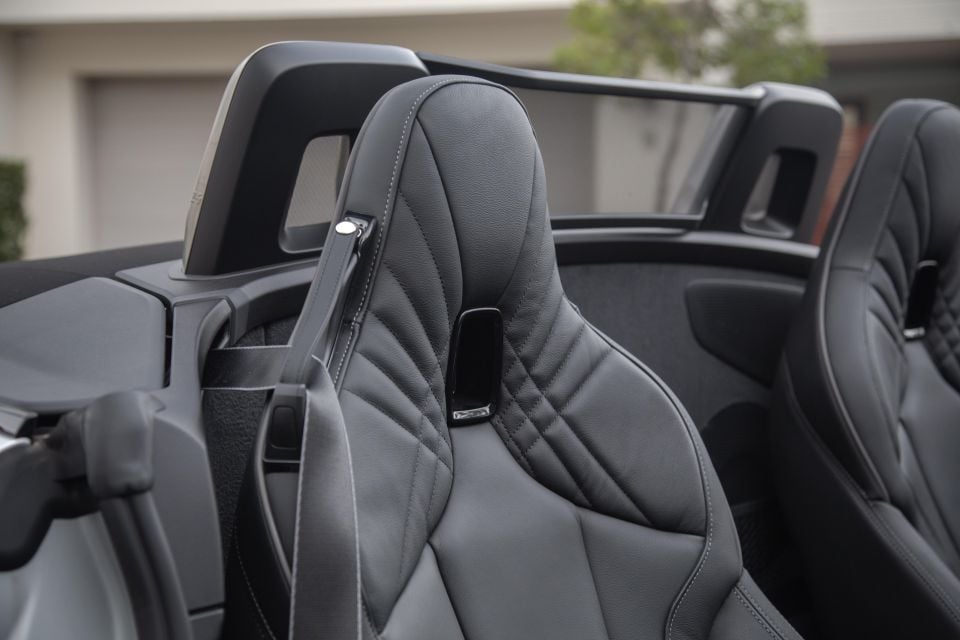
Inside, the cabin has fully electric M Sport seats with leather trim and heating, 10.25-inch digital instrumentation, a head-up display, 10.25-inch touchscreen infotainment with inductive phone charging, DAB+ radio, proprietary sat-nav, a 32GB hard drive (for music) and something of a rarity these days: a console rotary controller.
You can add these to the list too: adaptive cruise control, a reversing camera, ambient lighting, ‘comfort’ automated seat access, aluminium trim inlays, parking assistant smarts and 12-speaker Harmon/Kardon surround sound audio.
You also get a three-year subscription to BMW Connected Package Professional that includes real-time traffic info and wireless Apple CarPlay, as well as ConnectedDrive Services that include feel-good novelties such as real-time news and weather app displays.

This G29 generation Z4 has yet to be ANCAP tested though, for what it’s worth, it scored a maximum five stars in Euro NCAP in 2019.
It’s certainly worth considering the BMW has been through Europe’s assessment wringer if you’re cross-shopping drop-top two-doors – as a genre of motoring, the roadster breed’s track record in collision and active safety surety is patchy. Given what it fits, it’s unfair to lump the BMW Z4 in with the worst of them for lacking an ANCAP rubber stamp.
The Z4 loads in a host of camera- and radar-based active smarts. These include all-speed AEB with pedestrian and cyclist sensing, an active bonnet, speed limit assistance, lane departure and change warning, rear cross-traffic alert and rear collision prevention protocols.
It also gets dynamic brake lights and high-beam assist for the adaptive LEDs up front and fits four airbags and passive rollover protection ‘bars’. Roadster or not, the Z4 stacks up quite impressively on the safety front.
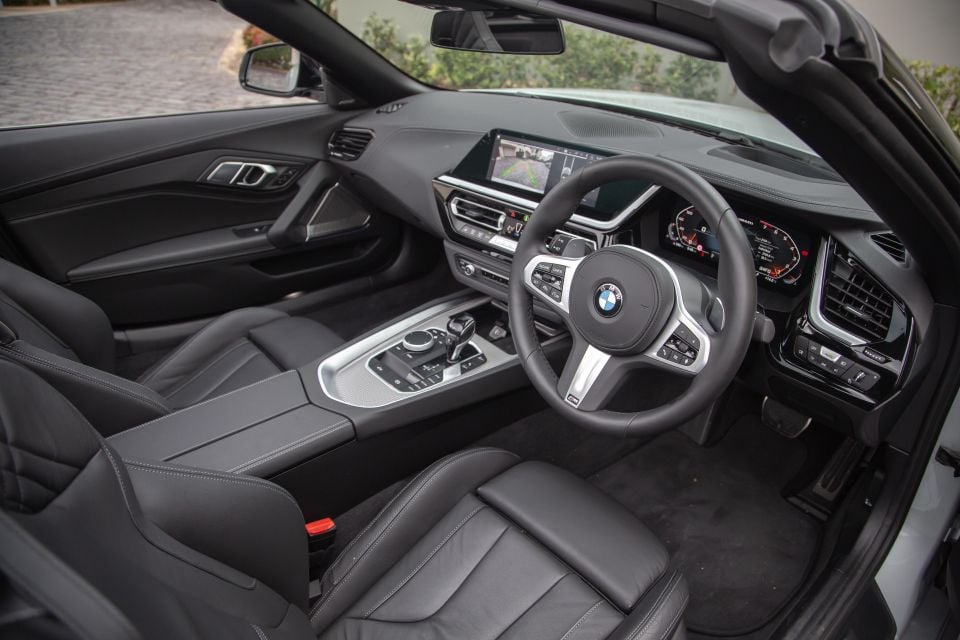
The Z4 is, in a word, low, both inside and out.
Aussie designer Calvin Luk’s exterior handiwork bucks tradition – the main character lines rises nose to tail, in opposition to prior generations – and styling is highbrow and arresting, with a broad nose and very squat proportions. The more time I spent with Z4, the more handsome it seemed to become.
The angular design theme is evident inside, too. You don’t so much climb as fall into the Z4 and the sensation of having your bum so close to Mother Earth is key to that roadster charm. Entry and egress requires effort and it’s a machine to avoid if you have back problems.
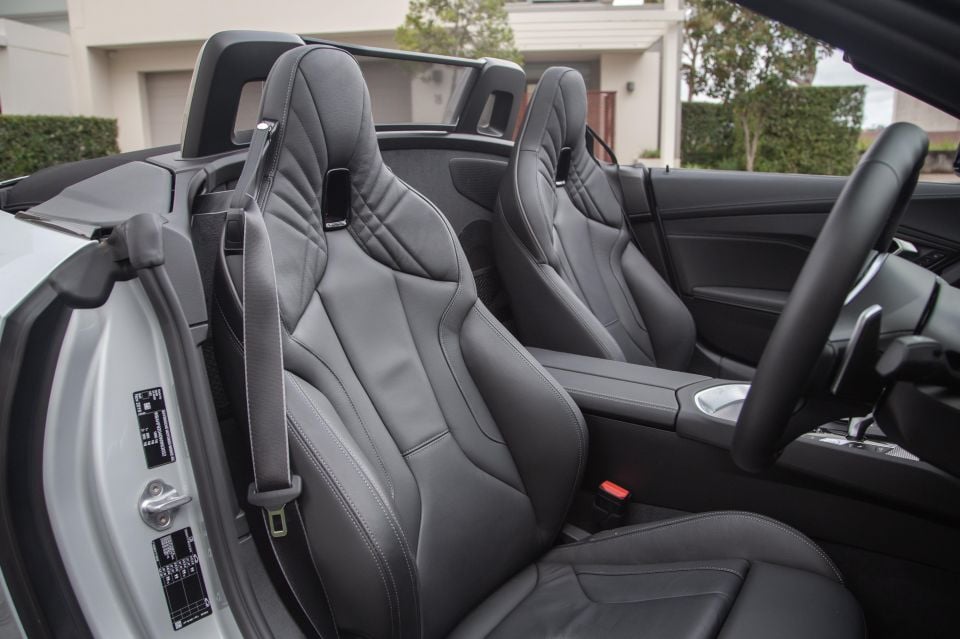
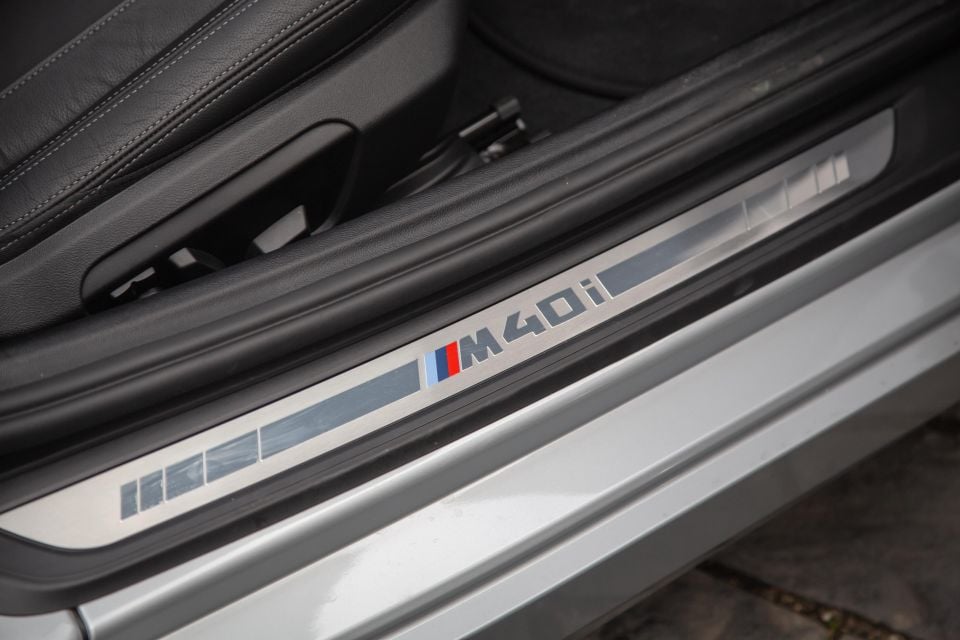
With its bonnet stretching off into the distance, the front wheels spread out ahead and seating perched rear the rear axle line, it bottles the roadster vibe confidently. It’s a surprisingly airy cabin space, too, its decent width, upright A-pillars and low, prominent centre console creating an ambience less claustrophobic than its forebears.
The door trim look, like the exterior design, is complex and make more sense the more you stare at it. The seats are suitably focused and form hugging, the thick-rimmed wheel suits the theme, and general ergonomics and control placement are fit for white-knuckled driving theatrics.
If there’s a markdown, it’s that the displays are a bit ordinary. Too much of it feels to have been lifted from a 3 Series and while it maintains a family look, it lacks a unique identity you might expect from a more compact, indulgent model asking for significantly more money.
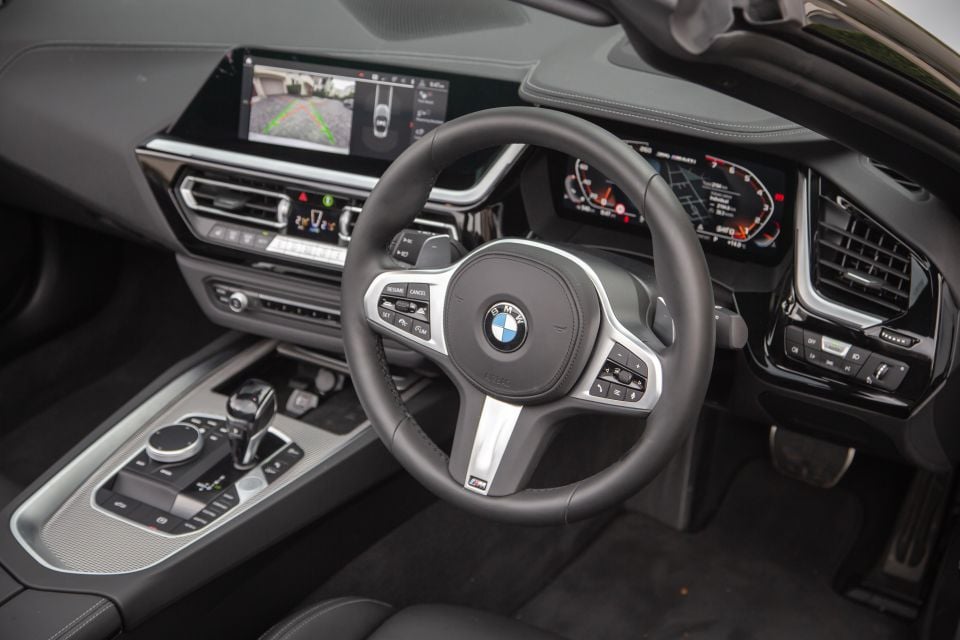

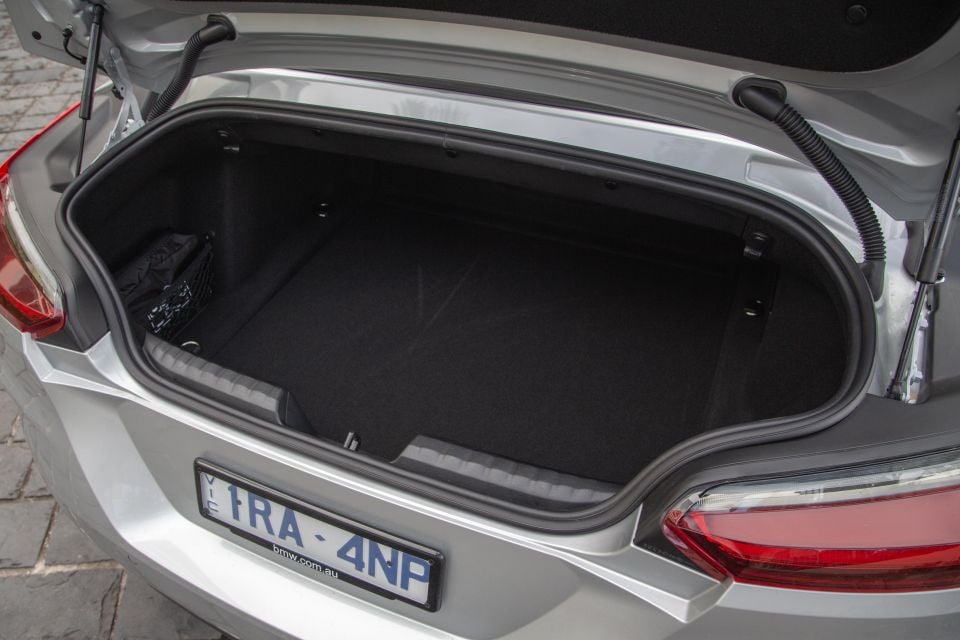
The digital dash skin, which bring a bit of techno lift to BMW’s sedans and SUV, is a bit incongruent in a stripped-back roadster. Fancy eye candy perhaps, but the driver’s screen lacks the ‘quick glance’ clarity you need in a focused car, which is perhaps why the Z4 needs the aid of a head-up display.
The infotainment system is powerful, razor sharp and chock-full of features, though the effort required to uncork BMW’s connected universe might be more than some users – not just owners – might care to invest.
For instance, CarPlay isn’t simply plug – or place, in the case of wireless application here – and play, but demands subscription and dicking about, robbing the format of its usual convenience in simplicity.
Boot space is modest 281 litres though, dimensionally, it’s roomy enough to fit a fairly large suitcase or most ‘weekend away’ gear you might have within reason. There’s a ski port, too. No spare, however, as you’ll have to make do with the goo.
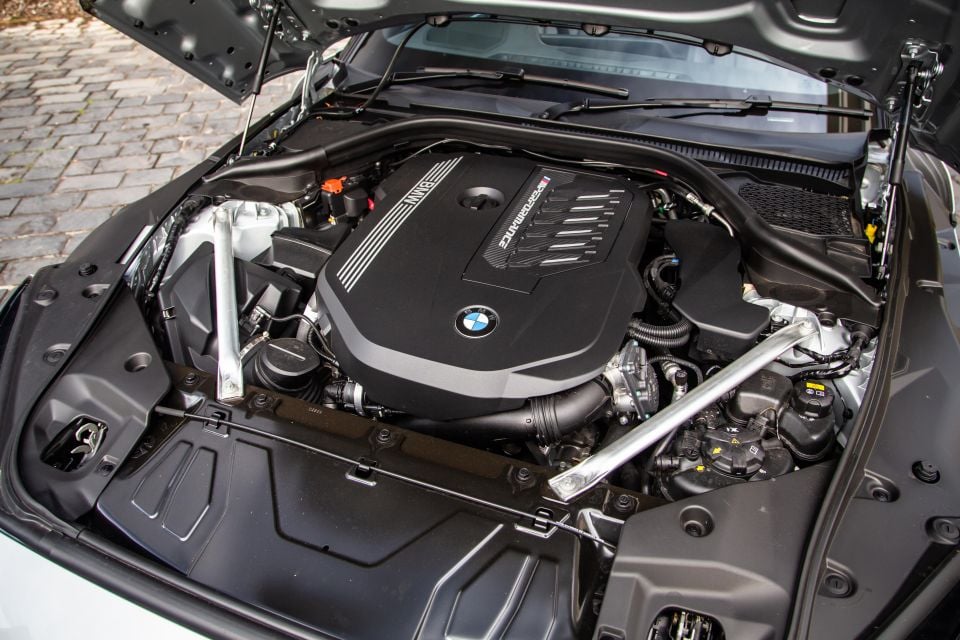
A straight-six in a two-door roadster is a beautiful thing. No offence, turbo-four fans, but some things are just meant to be. Three litres, BMW bred, turbocharged. Nice. It’s backed by a ZF-sourced eight-speed conventional automatic with paddle shifters, a format that’s had a renaissance in high-performance motoring.
The form guide? The M40i was 250kW and 500Nm in MY19 spec (identical to local Supra spec) though BMW’s 0-100km/h claim of 4.5 seconds was one-tenth shy of Toyota’s.
The latest ‘tune’ brings 285kW at an unchanged 5000-6500rpm band while peak torque remains 500Nm at 1800-5000rpm. And it brings a revised 4.1-second 0-100km/h claim.
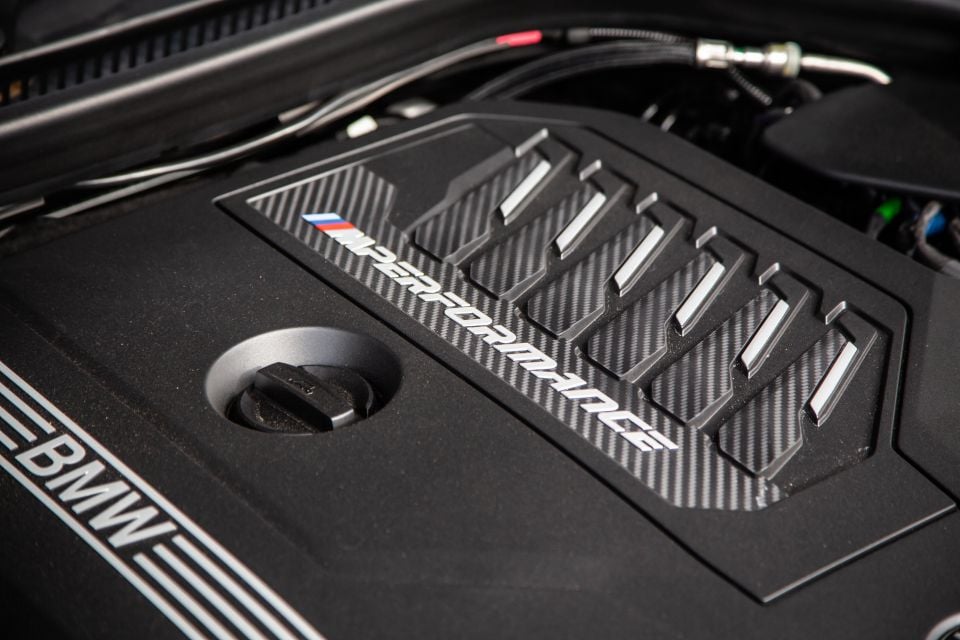
It seems BMW Australia was using an EU emissions friendly (250kW) tune prior, whereas the 285kW was and is fitted selectively in non-EU certified markets.
While powerful, the Z4 M40i is still well short of certifiable M-Car power, which is a different (S58) engine found in the 353kW X3 M and X4 M twins and 375kW in variants of that duo wearing Competition badging – also soon to be slotted into the next-gen M3 and M4.
Fuel usage is combined-cycle claim of 7.5L/100km though it typically returned around the nine-litre mark…admittedly with the lid stowed much of the time.
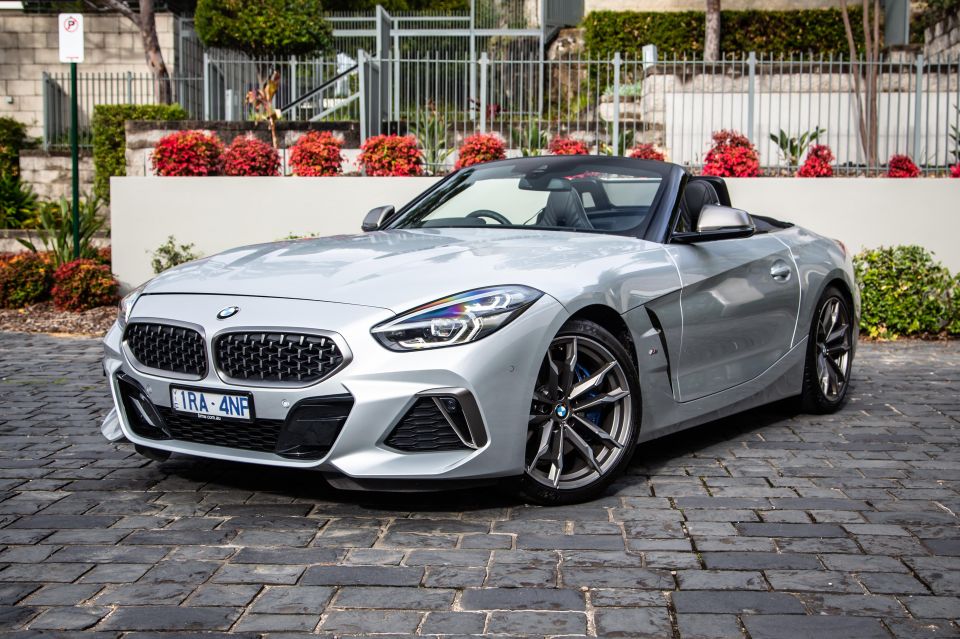
Or, perhaps most importantly, do you feel the extra power? Yes you do.
By the seat of your pants, that four-tenths quicker march to triple figures lifts the M40i from spirited to downright assertive in its march towards the horizon. Full noise, it takes your breath away deeper and harder.
The Z4 six now feels confidently quick and a little more eager to breach the adhesion of those broad rear Michelins though, to be fair, that could be the mid-winter, cold-weather assessment as much as than anything.
Give it the berries in a straight line and the thrust swells strongly and cleanly though to the crisp 6500rpm upshift. Left to its own self-shifting devices, the powertrain is impressively robust in delivery and intuitive in responding to the driver’s whims.
The impressive part is the engine’s output curves are linear and, in transition from peak torque to maximum power, smooth and predictable to right-foot input. In Sport mode, the powertrain marriage is assertive and cooperative, allowing the driver to easily dial up just the right amount of energy through the rear end during spirited cornering.
The head-scratcher, though, is why the auto gets a bit flustered in milder drive modes at low speed. Driven sedately there are pauses in take-up and nudges in ratio changes not unlike you expect from a dual-clutch transmission that the conventional automatic design should really a better job of ironing out.
I’ve been told numerous times by company reps that those palpitations have been engineered into these transmissions – by the carmaker, not supplier ZF – to make them feel more performance oriented. Whatever the case, it’s unnecessary and robs the machinery of daily driven refinement.
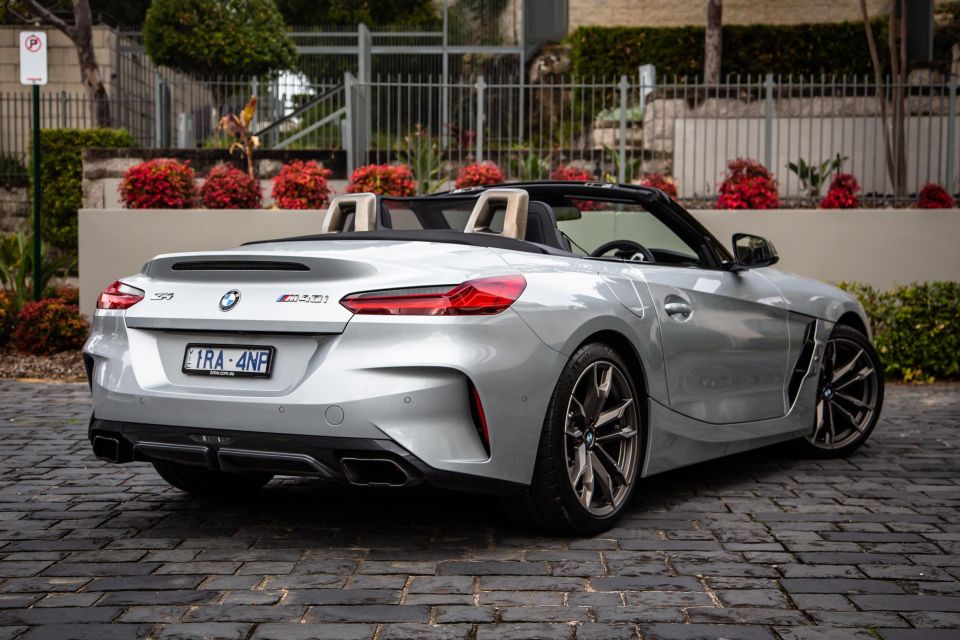
There’s a bit of brashness to the M40i though it’s generally fairly polite. There’s a ‘brap’ on cold or hot start-up and a pleasing if muted thrum to the exhaust note that’s evident without imposing itself on every driving situation.
What is ever-present, though, is the adaptive suspension goes from firm to certifiably hard, particularly in the rear. The trade-off to the stiffness is engagement, with a chassis that’s lively, planted and cooperative, one that certainly favours dynamic alacrity over around town comfort.
That said, it does settle nicely on the move and makes for quite a nice grand tourer. Bar some tyre roar across coarse-chip surfaces, there’s nothing fatiguing about spending long hours in the Z4.
Show it a succession of curves and the Z4 M40i feels most at home. The steering is measured yet beautifully direct and there’s a real fluidity to its balance… which is more than can be said for its Z4 forebears. Those Michelins muster up impressive lateral grip and dynamically it strikes a rewarding blend of liveliness and sure-footedness that’s both playful and confidence inspiring.
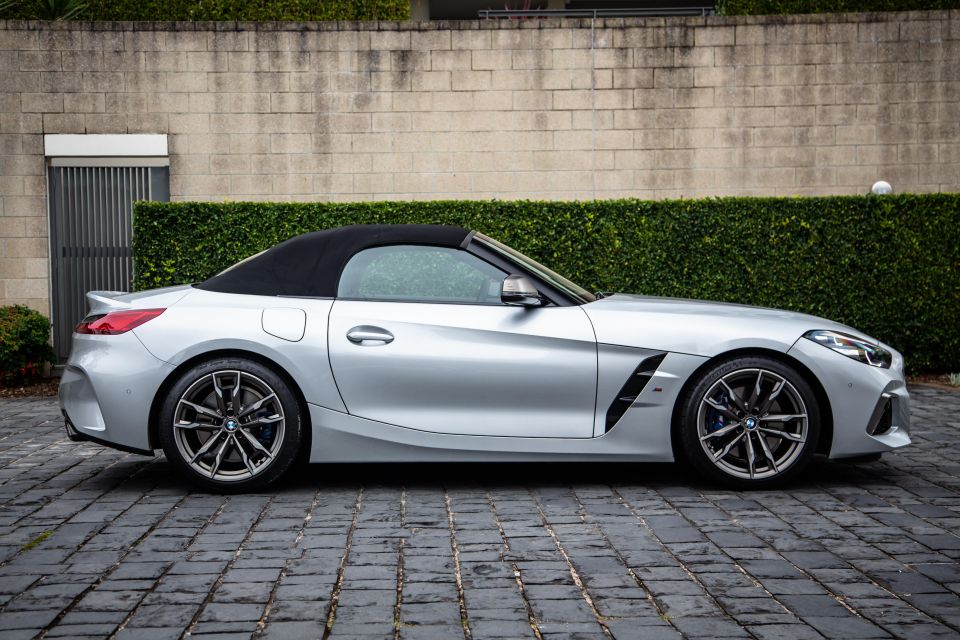
Where expert car reviews meet expert car buying – CarExpert gives you trusted advice, personalised service and real savings on your next new car.
Roof up, there’s good noise and temperature isolation from the environment. And there’s enough turbulence reduction in the cabin to make for a pleasant experience on the move with the lid stowed, even in winter. Top down is really where Z4 separates its character from Supra, for what it’s worth.
It is a little tough to judge the nose when parking and rearward vision is quite limited. The reversing camera is okay, though there’s some distortion and you need to tackle reverse parking carefully.
Warranty is slim three-year surety. BMW offers three-year/40,000km and five-year/80,000km servicing plans, the latter costing a very reasonable $1650, which is no more expensive than an X1 or 3 Series.
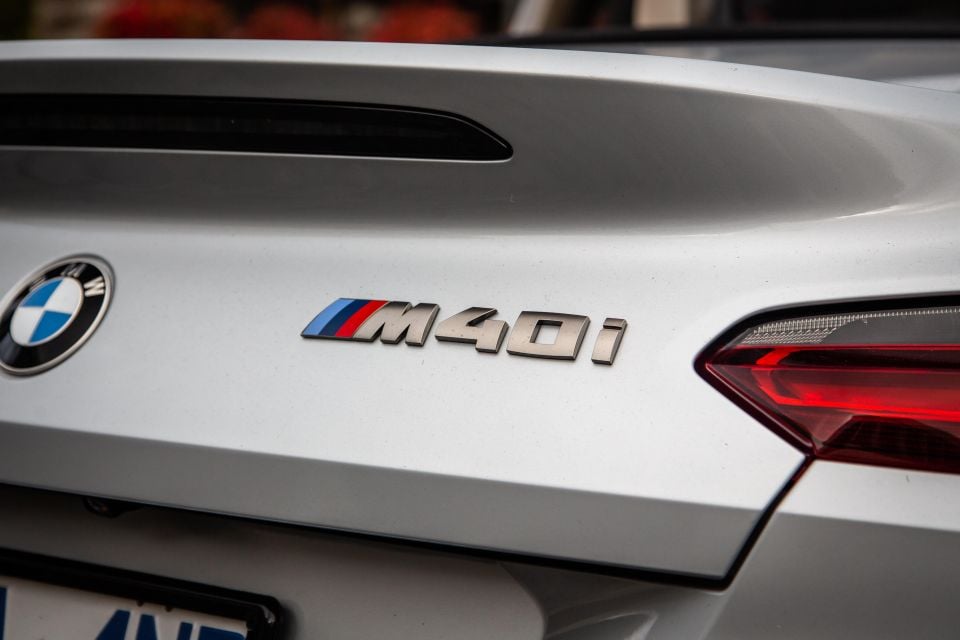
First, to the elephant in the room. The more vigorously powered Z4 M40i does close the bang-for-buck gap to Supra and does, for the time being at least, beat its chest harder while offering an added point of difference. But it’s still too pricey to be considered the better performance bargain, at least sat in the Toyota’s formidable shadow.
Instead, the Z4 M40i makes for more compelling statement on singular merit, as a premium Euro, as a BMW, as driver’s machine and as a rag-top. Regardless of shared DNA, there’s enough unique goodness in key areas that you mightn’t consider Z4 M40i a Supra rival at all.
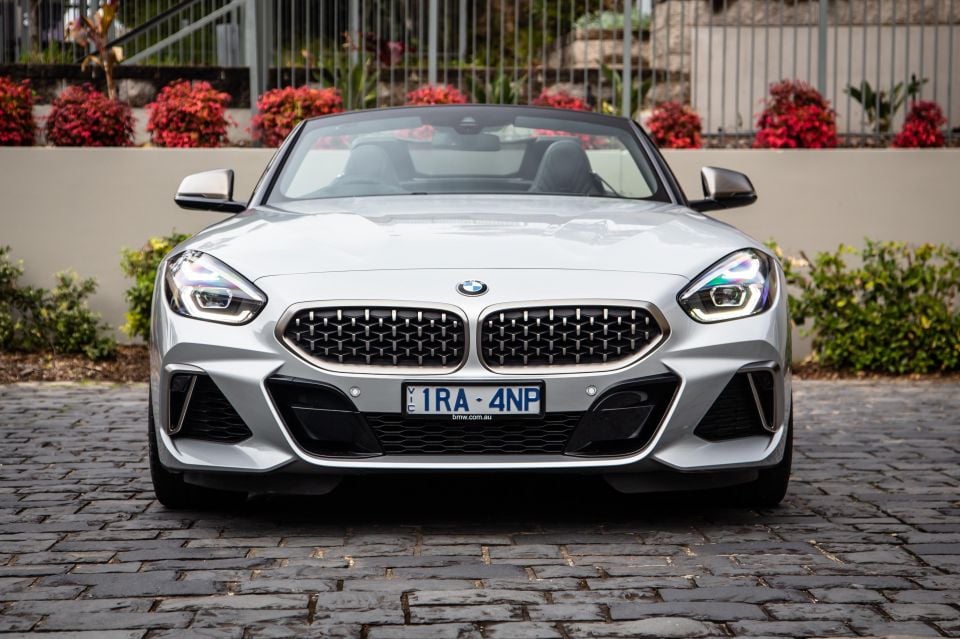
Does the 35kW make enough of a difference? Absolutely. But the extra power doesn’t address nor compensate for in key shortcomings in low-speed powertrain behavior and iffy interior display quibbles.
What’s really likeable about the BMW Z4 M40i is that it talks the roadster talk, yet it’s happier in its natural open-road environment than it is around town treated as a show pony, and all the better for it.
Where expert car reviews meet expert car buying – CarExpert gives you trusted advice, personalised service and real savings on your next new car.


Damion Smy
14 Hours Ago


William Stopford
2 Days Ago


CarExpert.com.au
5 Days Ago


Derek Fung
9 Days Ago
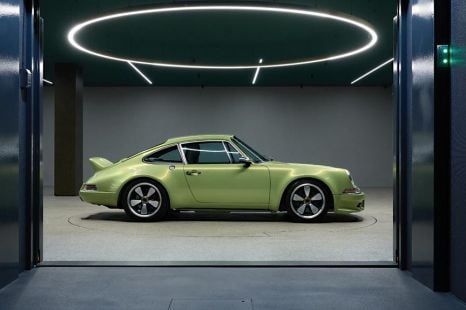

Marton Pettendy
25 Days Ago
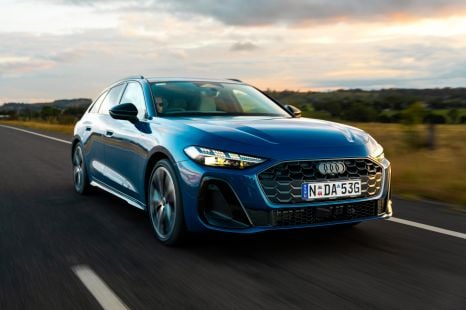

James Wong
1 Month Ago